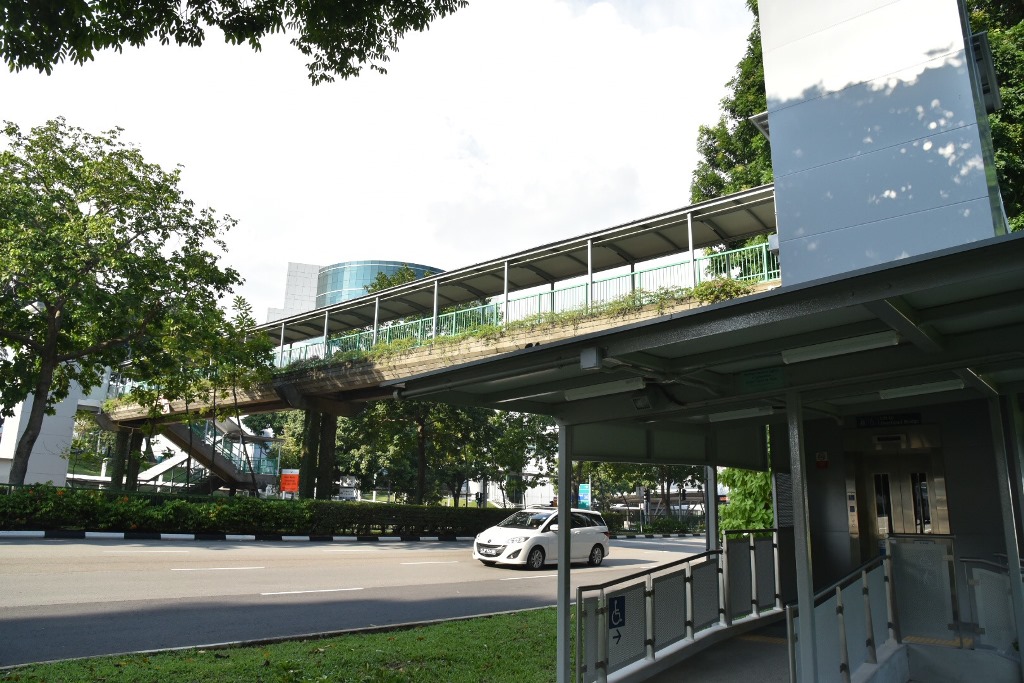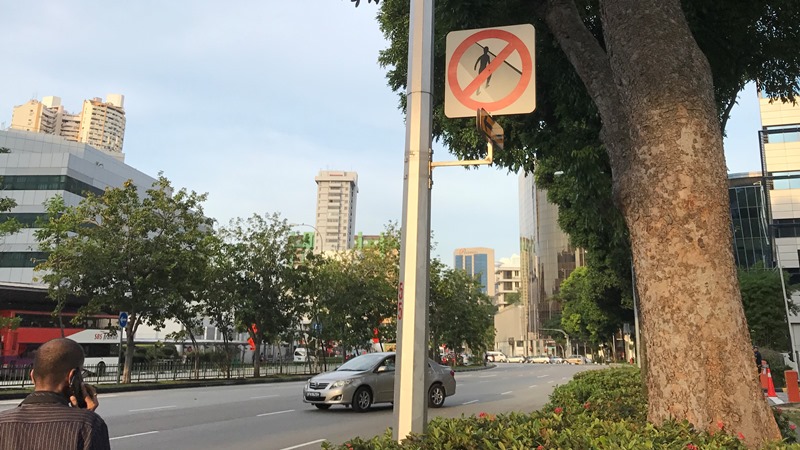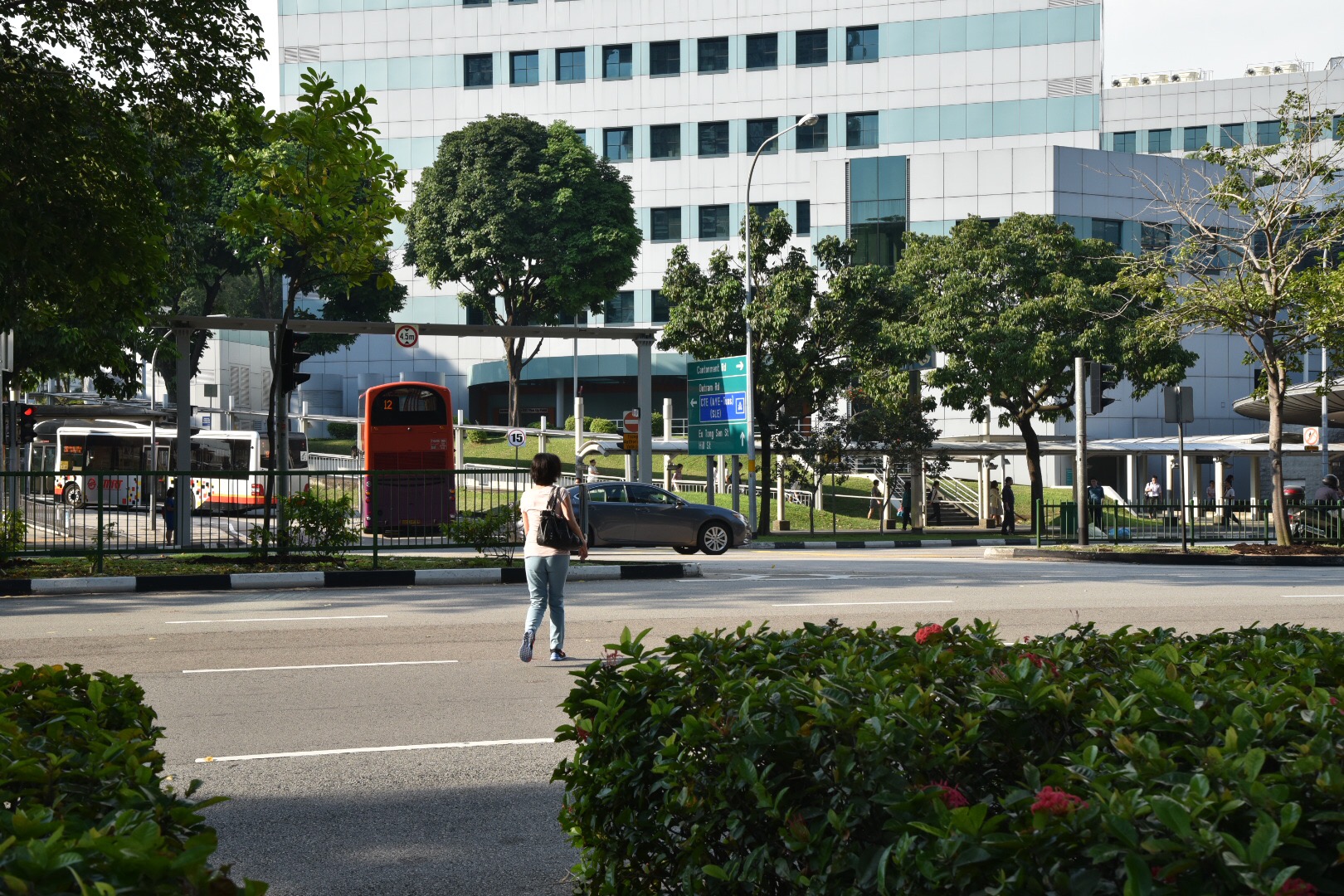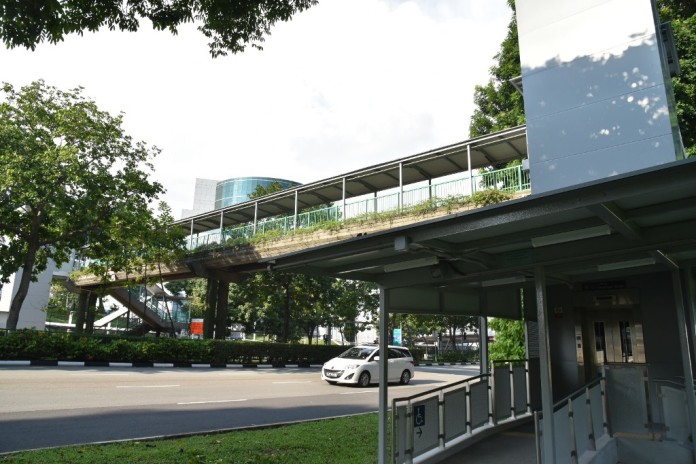SINGAPORE: It was 6pm and the traffic along Eu Tong Sen Street was heavy. Buses were turning in and out of the New Bridge Road bus terminal and cars were whizzing by constantly.
But the heavy traffic did not stop some pedestrians from dashing across the road, even though there is an overhead bridge installed with lifts just 20m away.
“It requires quite a bit of walking to the overhead bridge so it’s faster if I just cross the road,” said Ms Shanmugam, 43, who was on her way to the Singapore General Hospital.
“I know that it’s dangerous but I always look out for traffic,” she said, before stepping into the road.
Ms Shanmugam was not alone. Mr Lee was also seen running across the road. “It’s for convenience, I’m in a rush to go home,” said the 24-year-old.

An overhead bridge installed with lifts can be found just 20m away but many pedestrians chose convenience over safety. (Photo: Lim Jia Qi)
At Eu Tong Sen Street and New Bridge Road, jaywalking is a common sight. To deter the practice, green metal railings were erected along the road and a no-jaywalking sign was also put up along New Bridge Road. But that has not been enough to stop pedestrians from jaywalking.

A no-jaywalking sign is displayed along New Bridge Road but it was largely ignored by pedestrians. (Photo: Lim Jia Qi)
In December last year, an eight-year-old boy succumbed to his injuries after he was hit by a car while jaywalking with his grandfather at Eu Tong Sen Street.
According to the Singapore Police Force (SPF), the number of jaywalking accidents resulting in death or injury rose from 195 in 2014 to 230 in 2015. The increase came after a slide from 317 cases in 2011.
Over the past five years, Traffic Police issued about 7,400 warnings or summonses for jaywalking per year.
Jaywalkers can be charged and fined up to S$1,000, or jailed up to three months. Repeat offenders face a fine of up to S$2,000 or jailed up to six months. They can also be fined S$20 on the spot.
“Pedestrians are advised to use designated pedestrian crossings such as zebra crossings and overhead bridges, for their own safety,” said SPF. “They should give their undivided attention to the road situation while crossing the roads, regardless of whether the traffic signals are in their favour.”

A woman jaywalking across New Bridge Road. (Photo: Lim Jia Qi)
Chairman of the Singapore Road Safety Council (SRSC), Bernard Tay expressed concern over the increase in the number of cases. “Every accident or death is one too many,” he said.
“The motorists don’t know that there are people jaywalking. They are driving at a normal speed. So, there is a risk that the pedestrians are exposing themselves to vehicles and they are vulnerable because they are not protected by anything.”
ELDERLY PEDESTRIANS
Out of the 230 cases, a quarter of them were elderly pedestrians. Those above 60 years old made up more than half of the total number of pedestrian fatalities last year with 15 out of 22 cases.
“Some elderly may have weak legs, they may not be able to climb the stairs. That’s why some of them dashed across the road,” said Mr Tay as he hopes that the government can install lifts at more overhead bridges.
To enhance road safety for elderly, the Land Transport Authority will also expand the Silver Zone programme from 35 to 50 locations island-wide by 2023.
The programme, which has features to enhance road safety for the elderly, includes having signs to demarcate the zone, speed humps to slow down vehicles and centre dividers with railings to deter jaywalking. There are currently nine silver zones at areas such as Bukit Merah, Hougang and Jurong West.
CURB JAYWALKING
To address the problem, SPF said it has been engaging pedestrians through road safety talks and exhibitions at various institutions and work places. Officers are also deployed to carry out enforcement against jaywalking, said SPF.
The SRSC will also work with TP to educate the elderly and young children to practice the kerb drill before crossing the road.
“SRSC will continue to teach school children how to behave on the roads. Hopefully the message will be passed to their parents and grandparents,” said Mr Tay.





